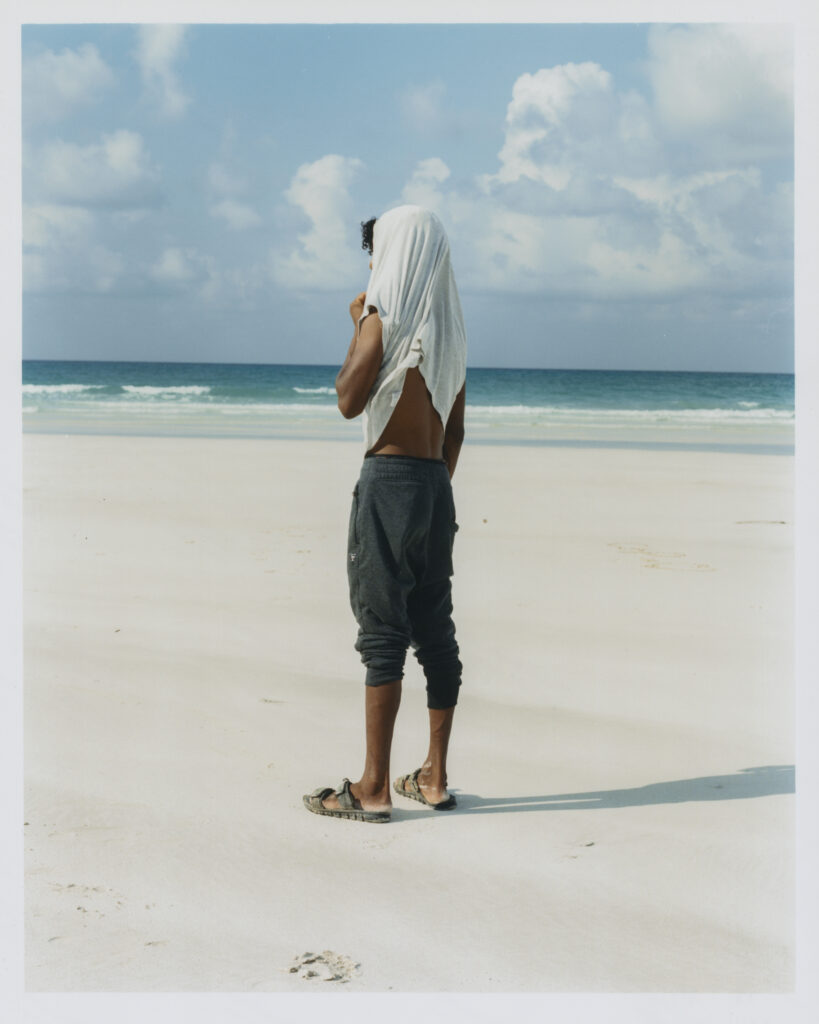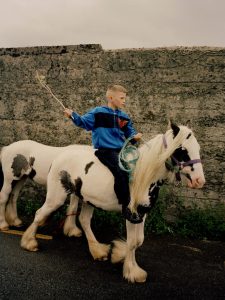
Nearby, Dutch photographer Sander Coers plugged in family photos (dating from the 1940s-1990s) into AI technology, generating new – if wholly phantom – imagery in the series POST (2023–2024). Coers’ grandfather was from Indonesia, a territory colonised by the Dutch, and his family shied away from discussing this heritage. “Though entirely fictitious, when we look at it, it has this very nostalgic feeling,” van Marle noted of Coers’ work. The photos are UV-printed on plywood, becoming tangible objects that belie the delicately chimeric nature of memory and family legacy both. In sharp contrast across the fair, Estonian artist Triin Kerge used embroidery to address typology of the family photo album. In Scenes From a Lost Family Album, she recreated faceless spectral poses – all in eerily familiar silhouettes – via thread, in what the wall text described as a “longing for an elusive past.” These works create a wistful, eerie feeling of absentia. “It’s an appreciation more of the analogue sides of things, and it’s good to offer both visions,” Isabella said of including Coers and Kerge.
Maria Kapajeva’s work at the fair was impossible to miss: the Estonian artist created two large-sale cyanotypes on cotton fabric, made during her residency at the Baltic Centre for Contemporary Art in Newcastle-upon-Tyne, which unfurled from ceiling to floor. She collaborated with Ukrainian and Russian women on this series, “Fluid Borders,” incorporating their physical contours alongside symbolic vegetation. On one fabric roll, exiled Ukrainian bodies were strewn against a blue background with plants non-indigenous to the UK; on the second, against a red backdrop, bodies belonging to Russian artists who fled to Estonia were interspersed with plants considered to be intrusive weeds. It’s an allusive work that wrestles with war, diaspora, the female body, and identity in a heightened socio-political reality.




